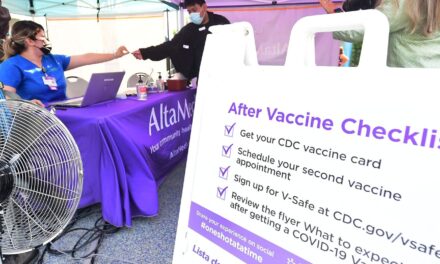
Opinion | How to Collect $1.4 Trillion in Unpaid Taxes
Mr. Rossotti has proposed that the I.R.S. require the new forms only for people with taxable income above a generous threshold. A bill including Mr. Rossotti’s plan, introduced by Representative Ro Khanna of California, sets that threshold at $400,000, to minimize the burden on small business. The money is undoubtedly in chasing wealthy tax cheats, but equity argues that business income, like wage income, should be subject to a uniform reporting standard. Small businesses ought to pay their taxes, too.
The proposal would not increase the amount anyone owes in taxes. It would, instead, increase the amount paid in taxes by those who are currently cheating.
How Has the Pandemic Changed Your Taxes?
Nope. The so-called economic impact payments are not treated as income. In fact, they’re technically an advance on a tax credit, known as the Recovery Rebate Credit. The payments could indirectly affect what you pay in state income taxes in a handful of states, where federal tax is deductible against state taxable income, as our colleague Ann Carrns wrote. Read more.
Mostly. Unemployment insurance is generally subject to federal as well as state income tax, though there are exceptions (Nine states don’t impose their own income taxes, and another six exempt unemployment payments from taxation, according to the Tax Foundation). But you won’t owe so-called payroll taxes, which pay for Social Security and Medicare. The new relief bill will make the first $10,200 of benefits tax-free if your income is less than $150,000. This applies to 2020 only. (If you’ve already filed your taxes, watch for I.R.S. guidance.) Unlike paychecks from an employer, taxes for unemployment aren’t automatically withheld. Recipients must opt in — and even when they do, federal taxes are withheld only at a flat rate of 10 percent of benefits. While the new tax break will provide a cushion, some people could still owe the I.R.S. or certain states money. Read more.
Probably not, unless you’re self-employed, an independent contractor or a gig worker. The tax law overhaul of late 2019 eliminated the home office deduction for employees from 2018 through 2025. “Employees who receive a paycheck or a W-2 exclusively from an employer are not eligible for the deduction, even if they are currently working from home,” the I.R.S. said. Read more.
Self-employed people can take paid caregiving leave if their child’s school is closed or their usual child care provider is unavailable because of the outbreak. This works similarly to the smaller sick leave credit — 67 percent of average daily earnings (for either 2020 or 2019), up to $200 a day. But the caregiving leave can be taken for 50 days. Read more.
Yes. This year, you can deduct up to $300 for charitable contributions, even if you use the standard deduction. Previously, only people who itemized could claim these deductions. Donations must be made in cash (for these purposes, this includes check, credit card or debit card), and can’t include securities, household items or other property. For 2021, the deduction limit will double to $600 for joint filers. Rules for itemizers became more generous as well. The limit on charitable donations has been suspended, so individuals can contribute up to 100 percent of their adjusted gross income, up from 60 percent. But these donations must be made to public charities in cash; the old rules apply to contributions made to donor-advised funds, for example. Both provisions are available through 2021. Read more.
It would have the immediate benefit of scaring people into probity.
Consider what happened after Congress passed legislation in 1986 to require taxpayers to list a Social Security number for each person claimed as a dependent. The government could not easily crosscheck all of those claims then, but the requirement itself caused a sharp drop in fraud. The next year, seven million children abruptly disappeared from tax returns.
To realize the full benefit of the new data, however, Congress does need to make a significant investment in upgrading the I.R.S.’s outdated computer systems, and in hiring enough qualified workers to examine suspicious cases and to hold accountable those who cheat.
In 2008, for example, Congress passed a bill to require credit card processors to report payments processed on behalf of online retailers on an annual form called a 1099-K so the I.R.S. could verify the income reported by those retailers. But in December, the Treasury Department’s inspector general reported that “resource limitations” had prevented the I.R.S. from investigating more than 310,000 cases in which individuals and businesses failed to report more than $330 billion in income documented on 1099-Ks.
Congressional Republicans, unable to muster public support for reductions in federal spending, have pursued that goal indirectly by constraining federal revenue, in part by hacking away at the I.R.S.’s budget. The share of all tax returns subject to an audit declined by 46 percent from 2010 to 2018, according to the Congressional Budget Office. For millionaires, the decline in the audit rate was 61 percent. Today, the government employs fewer people to track down deadbeats than at any time since the 1950s.
The result is a parallel increase in federal debt and in tax fraud.
Mr. Rossotti, together with the Harvard economist Lawrence Summers and the University of Pennsylvania law professor Natasha Sarin, argued in an analysis published in November that investing $100 billion in the I.R.S. over the next decade, for technology and personnel, in combination with better data on business income, would allow the agency to collect up to $1.4 trillion in lawful tax revenue that otherwise would go uncollected.
















